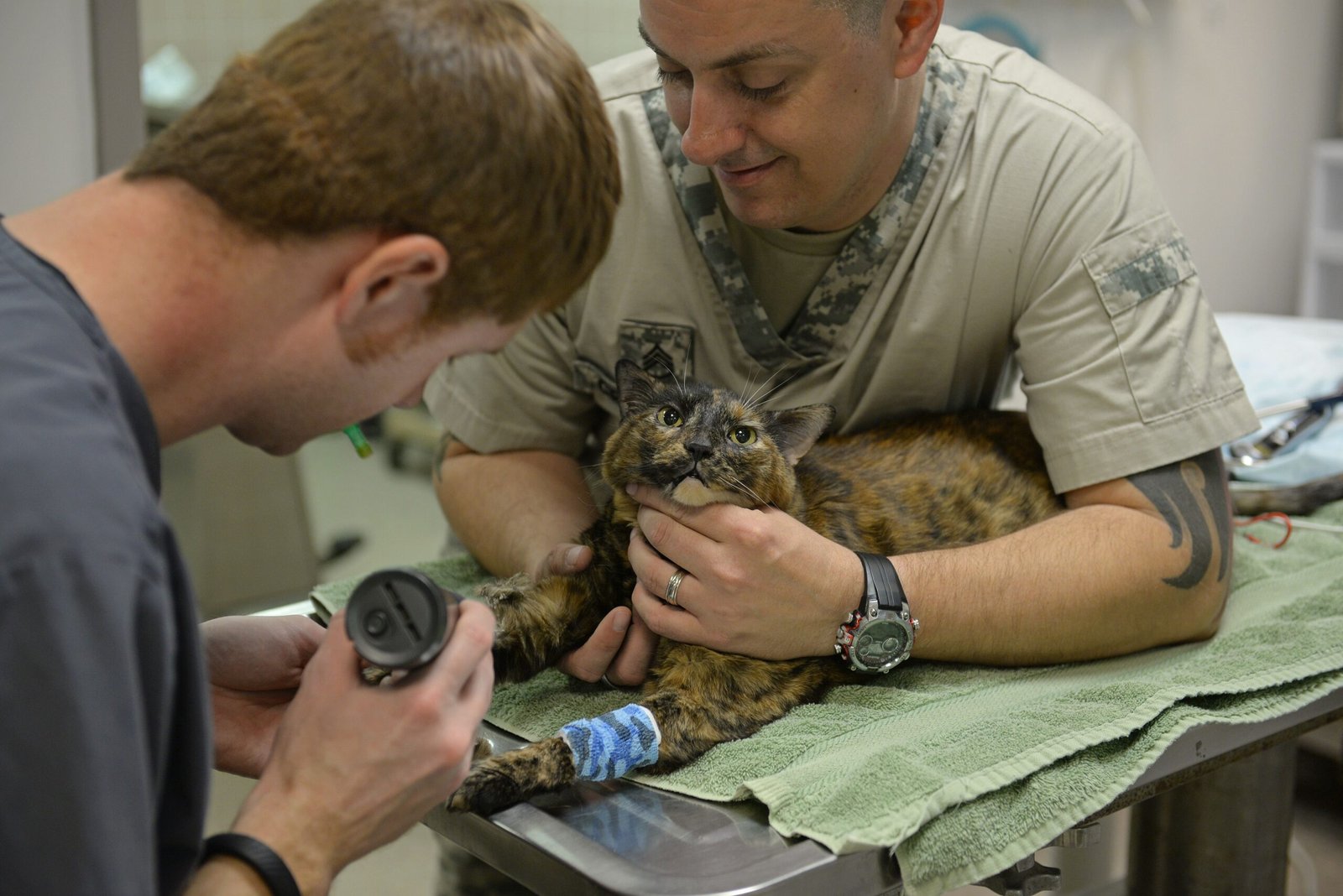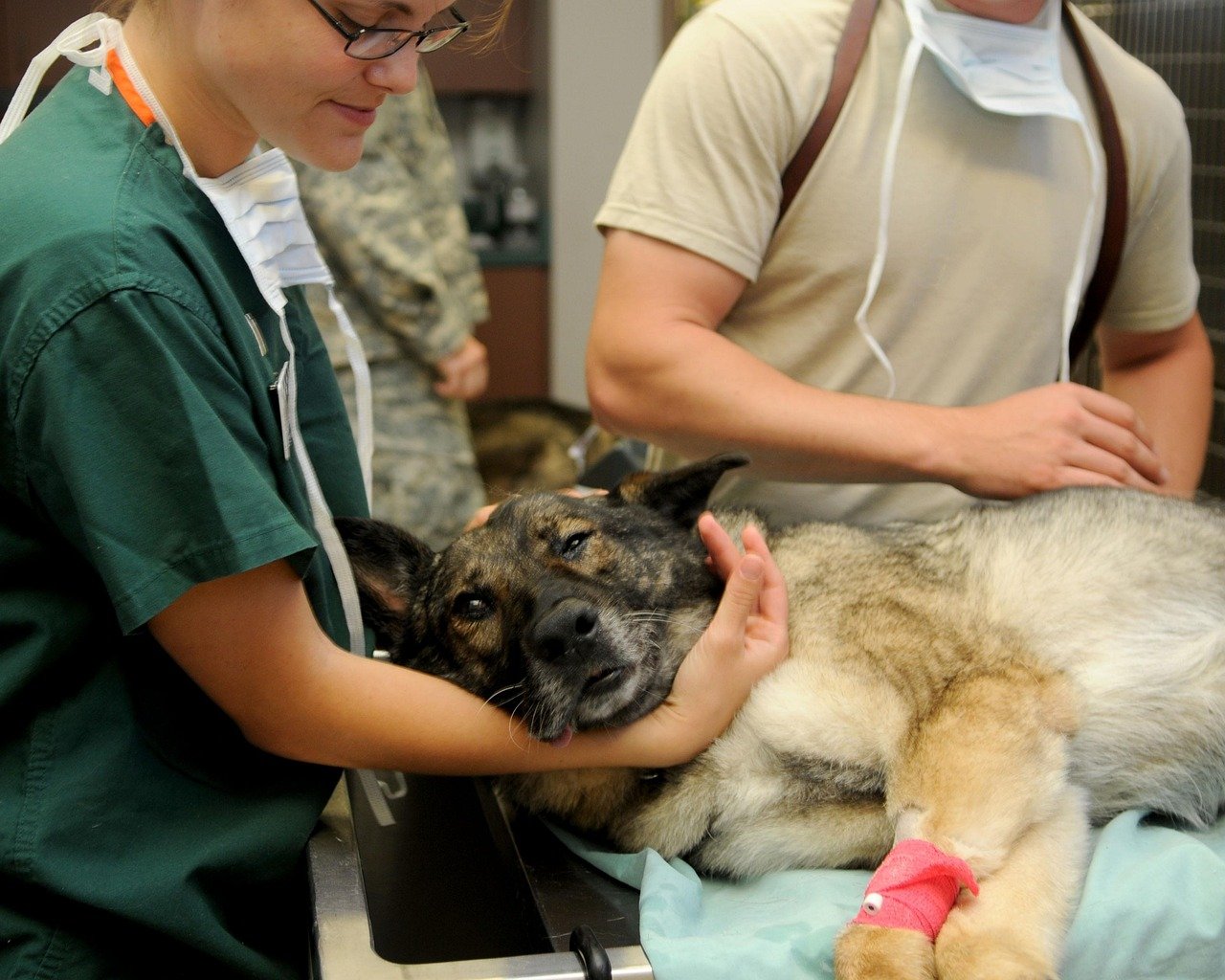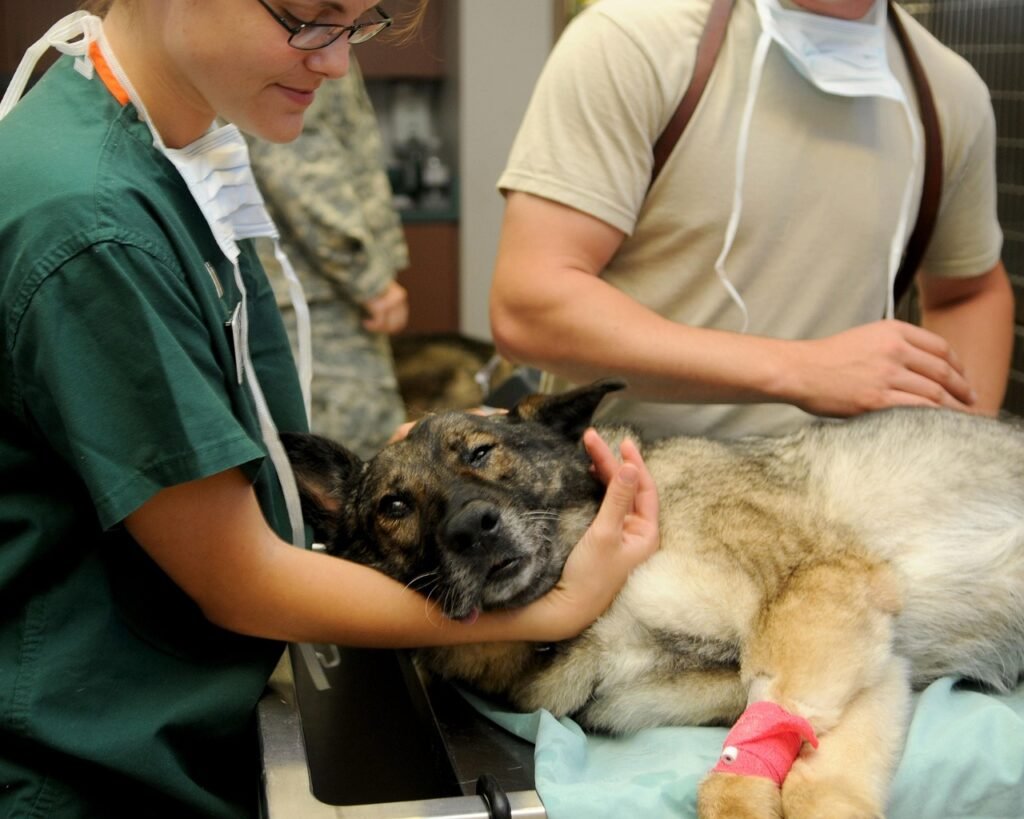Florida’s unique subtropical climate and diverse wildlife create some truly distinctive emergency scenarios for our four-legged friends. Whether you’ve just moved here from up north or you’re a lifelong Floridian, understanding these common pet emergencies can make the difference between life and death when seconds count. Your furry family member depends on you recognizing these warning signs before it’s too late. From heatstroke brought on by sweltering summer days to encounters with venomous snakes and toxic toads, Florida pets face dangers that aren’t as common in other parts of the country. Add in hurricanes, flooding, and year-round flea and tick threats, and it’s clear why veterinarians here stay busy with emergencies. Even something as simple as a backyard exploration can turn risky when curious dogs or cats stumble across hazards unique to the region. Knowing the signs of distress and acting fast isn’t just good pet care—it’s lifesaving. In Florida, preparation and awareness are every pet owner’s best defenses.
Heat Stroke Strikes Fast in the Sunshine State

Dogs and cats are especially vulnerable to heat-related illnesses, and in Florida’s humid climate, heat stroke can set in faster than many pet parents realize. That quick trip to the grocery store can turn deadly when your car transforms into an oven. According to a recent study, the temperature inside a car can increase by approximately 43°F in the first hour. This means even if it is only 70 F outside, the inside of the car can easily be greater than 110 F.
The scary truth is that dog heatstroke can occur very quickly and result in death in under an hour, especially if the pet does not have access to shade, water, and rest. Watch for heavy panting, excessive drooling, bright red gums, and weakness. If your pet collapses or shows difficulty walking, you’re dealing with a life-threatening emergency. Cooling your pet prior to arrival at the hospital has been shown to increase their chances of survival from 50% to 80%.
Gastric Bloat Can Kill Within Hours

Gastric dilatation and volvulus (also known as “GDV” or bloat) is a serious pet emergency in which a dog’s stomach fills with gas and becomes twisted. This condition is particularly common in Florida’s large dog population, especially those deep-chested breeds like Great Danes and German Shepherds that love our outdoor lifestyle.
GDV is where the stomach becomes twisted, it is probably the most serious non-traumatic emergency for any dog. The early signs may just be that a dog appears restless after a large meal and tries to be sick. As GDV develops your dog’s abdomen will become distended or bloated, your dog will show signs of discomfort or pain and will continue to try and be sick. If you notice your dog’s belly looking swollen after eating, don’t wait to see what happens. This is when every minute matters, and delaying treatment can be fatal.
Severe Digestive Distress Signals Trouble

One of the most common symptoms that prompts a veterinary ER visit is severe digestive distress. Florida pets often get into things they shouldn’t, from garbage raids during outdoor barbecues to munching on unfamiliar plants in our lush landscapes. Severe vomiting or diarrhea – more than two episodes in a 24-hour period, or either of these combined with obvious illness requires immediate attention.
Vomiting and/or diarrhea are some of the most common emergencies pets can have. These nonspecific gastrointestinal signs could be caused by a primary gastrointestinal problem (such as getting into the garbage or having an obstruction) or by a secondary cause (such as metabolic disease, cancer, etc). Dehydration can occur quickly, and depending on the underlying cause, symptoms can drastically worsen in a matter of hours. Don’t play the waiting game when your pet’s health hangs in the balance.
Poisoning From Florida’s Unique Dangers

Florida presents some unusual poisoning risks that northern pet owners might not expect. Cane Toads – These invasive toads (Rhinella marina) are not native to Florida but have established populations here. It secretes a white ooze behind its eyes that’s highly toxic and can cause permanent neurological damage when ingested. Your curious dog might see these toads as interesting playthings, but the consequences can be devastating.
Rodenticides are extremely common toxins in pets, but so are several household materials, such as cleaners, medications, plants, batteries, antifreeze, insecticides, paint, chocolate, xylitol containing products such as sugar-free gums, and fertilizers. Foxglove is a beautiful annual growing in Florida, which is quite poisonous to cats, dogs and humans. Kalanchoe – This beautiful plant is also toxic to dogs and cats, typically causing vomiting. Note that there are other backyard dangers too: bulb Plants, insecticides, mushrooms and fertilizer can all be poisonous to your pet as well.
Trauma From Wildlife Encounters

Trauma comes in many forms, and it’s one of the most common reasons why pets are brought to the ER. Florida’s abundant wildlife creates unique trauma scenarios you won’t find in most states. When you think of Florida, chances are, you probably think of alligators too. Alligators are one of the dangerous types of wildlife in Florida that can be found in every county and tend to stay near fresh or swampy water. Florida has roughly 1.3 million alligators in the wild.
Many pets sustain some sort of blunt force trauma in their life. The external appearance of a pet can be deceiving. Even a minor bump by a backing up car can prove to be life threatening due to internal injury, some of which can take hours to become apparent. If your pet has sustained any sort of blunt force trauma, seek veterinary care right away. What looks like a minor scrape from a wildlife encounter could hide serious internal damage.
Venomous Snake Bites Are More Common Than You Think

There are six different species of venomous snakes here in Florida. They are the Eastern Coral Snake, the Texas Coral Snake, the Florida Cottonmouth, the Dusky Pygmy Rattlesnake, the Timber Rattlesnake and the Eastern Diamond-backed Rattlesnake. Unlike many states where venomous snakes are rare, Florida’s warm climate keeps these dangerous reptiles active year-round.
Copperheads, which are typically brownish tan, have a very painful bite that’s typically less life-threatening than rattlesnakes. Sometimes, they will “dry bite” without injecting venom, but it’s best to assume that the bite was poisonous and get your pet medical attention immediately. Coral Snakes – An elusive, burrowing, red-and-yellow snake that happens to be one of the most poisonous animals in Florida, the coral snake has a powerful neurotoxin that can cause respiratory failure over the span of about 18 hours. Time is absolutely critical with snake bites.
Severe Allergic Reactions Strike Fast

Pets can commonly develop allergic reactions. Causes of these reactions range from vaccine sensitivity to insect bites. Symptoms generally include facial swelling, hives, and itchiness, but may also include profuse vomiting and diarrhea, lethargy, or difficulty breathing. Florida’s year-round bug season means pets face constant exposure to potential allergens.
Similar to humans, pets can be allergic to certain triggers, causing reactions ranging from mild to severe and life-threatening. Treatment options include antihistamines, corticosteroids, IV fluids, oxygen, topical medications and monitoring. More people die from allergic reactions than from snakebite! The same urgency applies to our pets when they’re experiencing severe allergic reactions.
Difficulty Breathing and Choking Emergencies

Choking can be a serious problem, even if the symptoms resolve within seconds. Lack of proper oxygenation or the build-up of fluid within the lungs can be dangerous consequence of choking. Coughing is a vague symptom of several possibilities, including viruses, bacteria, fungal pneumonia, allergic bronchitis, or even heart failure. Any compromise in your pet’s respiratory ability should be evaluated by a veterinarian as soon as possible.
Florida’s humidity can exacerbate breathing problems, especially in flat-faced breeds that are already prone to respiratory issues. As with humans, it’s never a good idea to “wait and see” when an animal cannot breathe. Never try to clear the airway, and learn animal CPR to keep the animal safe. When your pet struggles to breathe, every second counts in getting them professional help.
Urinary Blockages Become Life-Threatening Fast

Straining to urinate is a symptom of more than just a urinary tract infection. Many pets will strain to urinate if they have crystals or stones in their bladder. Inflammation, blood clots, cancer, or even stress alone can all cause difficulty urinating. If a pet is straining and is unable to pass any urine, it is a life threatening emergency that needs to be addressed by a veterinarian immediately.
This emergency often catches pet owners off guard because the initial signs seem minor. Your cat might spend extra time in the litter box, or your dog might squat repeatedly during walks without producing urine. If the animal has pain in urination or defecation, or can do neither, it’s important to find out why. The animal could have an issue larger than you can handle, and may need a doctor’s care. Animals often do not express pain, so an ongoing issue can progress to a life threatening problem without your knowledge.
Seizures and Neurological Emergencies

Seizures are episodes of abnormal electrical activity within the brain. They can be triggered by intra-cranial problems (such as epilepsy, brain tumors, or brain swelling) or extra-cranial problems (such as low blood sugar, electrolyte disturbances, etc). In Florida’s heat and humidity, seizures can be triggered by overheating or toxin exposure from our unique environmental hazards.
If an animal seizes, vet attention is required immediately. Staggering also falls under this category. These activities indicate a problem with the brain, and the animal needs immediate help. A vet can assess the situation, and might require more tests to find out how to best help the animal. Don’t assume a single seizure is nothing to worry about – it could signal a serious underlying condition that needs immediate treatment.
When Every Second Counts: Recognizing True Emergencies

Living in Florida means being prepared for emergency situations that pet owners in other states rarely face. The University of Florida’s Small Animal Hospital is the only facility in the state certified as a Level 1 Veterinary Emergency and Critical Care facility, the highest level awarded by the Veterinary Emergency and Critical Care Society. This means we provide 24/7, sophisticated emergency and critical care for small animals, with at least one board-certified specialist available at all times. Our team manages a wide range of emergencies, from trauma and kidney disease to lacerations and toxin exposure.
It can be quite frightening to see your pet suffering, especially if you are unsure the situation should be considered an emergency. When in doubt, always contact your veterinarian or the nearest animal hospital. But to hopefully better prepare you, here are 10 of the most common pet emergencies found in emergency veterinary hospitals around the country. Trust your instincts – if something seems seriously wrong with your pet, it’s better to be cautious and seek professional help immediately.
Conclusion

Florida’s unique environment creates a perfect storm of potential pet emergencies that require quick thinking and even quicker action. From the relentless heat that can cause deadly heat stroke within minutes to the venomous snakes lurking in our backyards, our beloved pets face dangers that many other regions simply don’t have. The key to keeping your furry family members safe lies not just in prevention, but in recognizing the warning signs before it’s too late.
Remember that Florida emergency veterinary clinics see these cases daily, and they’re equipped to handle everything from alligator encounters to toad poisoning. Your job isn’t to diagnose or treat – it’s to recognize when something’s wrong and act fast. When in doubt, make that call. Your pet’s life might depend on those crucial minutes you save by seeking help immediately rather than hoping things will improve on their own.
What surprised you most about these Florida-specific pet emergencies?

Hi, I’m Andrew, and I come from India. Experienced content specialist with a passion for writing. My forte includes health and wellness, Travel, Animals, and Nature. A nature nomad, I am obsessed with mountains and love high-altitude trekking. I have been on several Himalayan treks in India including the Everest Base Camp in Nepal, a profound experience.




